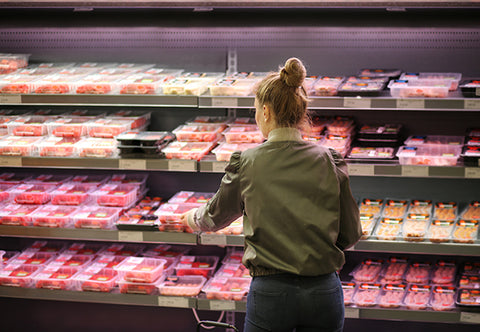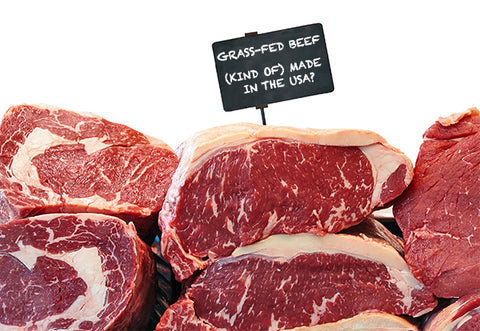October 31, 2019 0 Comments
Americans buy more and more grass-fed beef every day. The growing trend stems from increased demand, among chefs and consumers alike, for foods with improved nutritional value, better flavor, and raised with respect toward animal welfare and positive environmental impact.
Unfortunately, in the race to satisfy the burgeoning demand, some grass-fed beef producers and processors have resorted to tricks and shortcuts. As a result, the industry has fragmented into a variety of grass-fed beef production methods – and not all are created equal.
When you buy a product labeled as "grass-fed beef produced in the USA," you probably assume the cattle were raised exclusively on pasture in America, eating a diet of actively growing forages and forage supplements, using environmentally responsible farming methods.
The truth, however, is not always so picturesque.
By learning about the different types of grass-fed beef producers, and the shortcuts some of them take, you will be in a much better position to choose grass-fed products that not only offer the flavor and health benefits you expect, but that you can feel good about buying and consuming.

Grass-fed beef production models in America now fall into three categories: Imported, Low Integrity Domestic, and High Integrity Domestic.
Imported grass-fed beef generally comes from South America or Australia/New Zealand. The main benefit of imported grass-fed beef for producers and processors is that it is inexpensive.
It may seem counterintuitive that a perishable product can be shipped on ocean freight across the globe and still be lower in cost than a domestic product. In order to understand this, you must acknowledge that in other countries, grass-fed production is the commodity production method. That simply means there’s nothing special about the beef!
Imported grass-fed beef producers take whatever cattle they can find, graze them in massive herds, and process the beef in an area with fewer regulations and lower labor costs. It is actually cheaper (per pound of beef) to ship containers of imported beef by ocean freight than to ship from state to state in the U.S.
Importers know that you don't want imported grass-fed products, so they hide behind loopholes in the labeling regulations. They will import the beef in bulk, and once it reaches America, they further process and re-pack the beef in a USDA- inspected plant. Voilà – you have a package of grass-fed beef that can legally be labeled “Product of USA.” Tricky, isn’t it?

Our second category includes domestic producers of low integrity. The integrity referenced here is not that of dishonest business practices, but dishonest farming practices.
When raising high-quality, truly grass-fed beef, it's critical to use cattle that are genetically built for a 100% grass-fed diet. Low-integrity domestic producers ignore that, using whatever source of cattle they can find. These could be mature animals that are too old to be of value to a feedlot producer, or they could be cull cows coming from a dairy operation or a beef cow-calf herd.
Cull cows are a byproduct of breeding and/or milking operations. They may technically be grass-fed (they may never have been fed grains), but they were never intentionally raised for superior eating quality, flavor, or positive environmental impact. The taste, texture, and tenderness are sub-par, but producers attempt to hide those downfalls by offering the product as ground beef.
Low integrity producers may also buy cattle at auction, which will always be a risk because the seller knows there is a premium to be gained by selling the animals as "grass-fed." There are sellers who are even willing to fraudulently sign documents claiming the animals were grass-fed, even when it cannot be verified or substantiated. The low integrity producer is willing to accept that documentation at face value and has no desire to learn if the purchased livestock were legitimately grass-fed or not.
Low integrity producers also include feeding companies, or "feeders," as they are known in the industry.
Feeders operate large feedlot operations, in which livestock are placed into dirt pens of various sizes. The animals cannot graze, simply because there is nothing to graze in a dirt pen! Instead, formulated rations (called TMRs) are mixed at the feedlot and distributed in a trough at each pen.

The cattle are not grazing growing plants. Furthermore, the rations barely resemble a plant. There are no leaves, stalks, or flowers, but instead a pellet or mash of plant-based materials. This pellet may be an “everything but the corn” blend that includes grain silage, sugars, palatants (flavorings that make the feed more desirable to the animal), minerals, and pharmaceuticals. It could also include Dried Distillers’ Grains (DDGs), a byproduct of ethanol production, where the grain is distilled for ethanol, dried, and sold as a livestock feed. When DDG’s are used, the grass-fed beef is not truly grass-fed at all; the cattle are consuming a grain byproduct.
The treat of the grass-fed production world!
High-Integrity Grass-Fed Beef producers are those that use honest and ethical farming practices, with the utmost respect for the land, the animal, and the quality of the final product.

Joyce Farms Heritage Aberdeen Angus Grass-Fed Beef, USDA Prime
High integrity production is authentic grass-fed. It is the product that you picture in your mind when you think of grass-fed beef - it's what you expect to receive when you pay a premium, grass-fed beef price. The animals are always on pasture, they eat grass/forage and forage supplements exclusively, and they are never confined to feedlot dirt pens.

Joyce Farms Heritage Aberdeen Angus cattle on pasture in North Carolina.
There are no tricks or shortcuts when it comes to high integrity grass-fed beef production. In fact, it is a series of building blocks. Attention must be given to not only what the cattle eat, but their genetic makeup, the mix of plants they consume, stock density, and grazing patterns. The devil is in the details!
The first building block is superior livestock genetics. High integrity production resulting in a high-quality eating experience must start with superior cattle genetics.
In the past several decades, commercial cattle genetics have been bred specifically for feedlot production; but even the best commercial genetics simply cannot produce high-quality beef on a 100% grass-fed operation. The animals are too large and are not good grazers.
Instead, high integrity grass-fed beef producers use more moderately framed cattle, bred specifically for grass-fed production. These calves are not as numerous and can be more costly to purchase.
The second building block is the forage. High integrity producers will never graze cattle on a monoculture forage. Instead, they will graze livestock on diverse pastures offering many different species of grasses, legumes, and forbs. This variety is of paramount importance for the palatability and nutritional value of the finished beef, and for the health of the cattle.
The third building block is the grazing plan. Many grass-fed beef producers will throw around buzz words like “mob grazing” and “Serengeti method," but the truth is that most grazers don’t actually follow through with any grazing plan. Proper grazing management must be adaptive in nature and practice.
Nature and biology are never static, and grazing can't be either. Adaptive grazing involves frequently moving cattle from one pasture to the next, monitoring the available forage in each pasture, and using keen observation to anticipate and prepare for changes in weather, season, and the size of the herd. Many techniques must be implemented to be an effective grazer, but a written plan is only as good as its execution.
The fourth building block is the most important of all - without it, nothing else matters. That building block is soil health.
To produce grass-fed beef, you need grass, and you can't have grass without healthy soil. Healthy soil is vibrantly alive with billions of microbes per gram of soil, thriving with insects, and resilient to nature’s challenges.
The soil in our nation’s farmland has been damaged by generations of misguided farming practices. The rampant use of tillage, chemical and pharmaceutical problem-solvers, and ineffective synthetic fertilizers have taken abundantly fertile land and transformed it into a man-made desert.
Thankfully, the damage is repairable...with the right farming practices. The solution to fixing soil health and protecting our food system for future generations is Regenerative Agriculture.
Regenerative Agriculture is a surprisingly simple method of farming that cooperates and collaborates with nature, rather than trying to “tame” or fight it. Regenerative practices repair, restore, rebuild, and regenerate the soil, rather than degrading it (like industrial agriculture) or even maintaining its degraded state (like sustainable, organic farming). The truth is, we can never be sustainable, and with so much already-degraded land in our nation, why would we want to?
Regenerative Agriculture is a journey, not a destination, but there are six principles that can be implemented universally. You can learn about them here.
By using labeling tricks and legal loopholes, Imported Grass-Fed Beef Producers and Low Integrity Domestic Grass-Fed Beef Producers put the entire grass-fed beef industry at risk of rattling public confidence.
There may be a need for more than one kind of grass-fed production system, but if that's the case, they should all be honest and transparent to the end user.
Next time you are searching for a grass-fed beef product, don't just rely on labels and claims. Get to know the farmers and producers - ask questions about their animals and their practices. If they are ethical in their production, they won't have any reason to hide.
It is up to us, the high integrity producers, to continue to produce a premium product that lives up to the grass-fed expectation -- one that offers the taste, texture, tenderness, and health benefits that our customers expect, with no tricks.
Now that you know more, which kind of grass-fed beef producers will you choose to support?
May 28, 2025 0 Comments
Follow the full journey of our Poulet Rouge® Chicken—from eggs in France to 12 weeks of pasture-centered care on Carolina farms.
